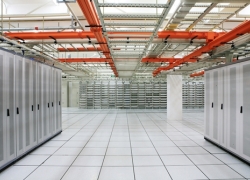Top 5 reasons to deploy DCIM in your data center
Top 5 reasons to deploy DCIM in your data center

Data center infrastructure management systems allow for easier management and asset monitoring. Companies that choose to adopt DCIM technologies can manage every part of their data centers, from the humidity to the cooling system to the rack. According to TechTarget, growing data centers and their subsequent increased complexity create a need for more effective management techniques and tools, and DCIM is helpful for companies to have the information required for making big decisions and future planning of the data center.
"[I]t is difficult to achieve the more advanced levels of data center maturity, or of data center effectiveness generally, without extensive use of DCIM software," said Andy Lawrence, author of "Datacenter Infrastructure Management Software: Monitoring, Managing and Optimizing the Datacenter," according to Data Center Knowledge.
Lawrence's message is clear: DCIM systems are crucial for facilities today to continue to be successful and secure. Here are the top five reasons you should consider a DCIM solution for your data center:
1. Track usage of key resources
According to Data Center Knowledge, DCIM provides important information about operations, including environmental, power and cooling data. It then analyzes this data in order to predict how the data center will use these resources over time. This information can be important when deciding whether to purchase new cooling equipment or when planning for future power needs at the rack level.
2. Increase energy efficiency
Efficiency in the data center is hugely important. Using key resource usage data like power capacity forecasts, businesses can predict when spikes will occur and implement strategies to ensure the power in their data centers is going to necessary processes and isn't being wasted. DCIM software can also identify power-hungry systems that can be replaced with more energy-efficient models.
3. Enhance workflow management
The data provided by a DCIM solution can assist with planning and management of workflows as well. According to TechTarget, DCIM software can balance workloads, consolidate servers and even power down equipment not required for current processing needs. In the long run, this means the data center will use less power and be prepared for any changes in the workflow.
4. Disaster prevention
When key resource usage can be tracked, decisions can be made about the future of the data center based on current and estimated power or cooling usage. This can lead to better capabilities to prevent problems within the data center environment. For instance, if the data center maintains a higher-than-recommended temperature, companies would see that data and be able to make an informed decision about cooling systems.
5. Reduce data center costs
Deploying a DCIM solution within your data center will help your company save money in the long run. In fact, Steve Brasen, managing research director at Enterprise Management Associates, told Processor that a DCIM platform will pay for itself within the first year of use. With increased energy efficiency and effectiveness, companies can get more out of their data centers for less.
Problem prevention is also a big money saver. The impact of data center downtime on the bottom line of a company continues to increase. According to a study by the Ponemon Institute, the average cost per minute of data center downtime was approximately $5,600 in 2010, but that number jumped to 41 percent to $7,900 in 2013. By using DCIM to properly monitor systems and make important decisions about the future of the data center, companies can avoid these costly fees.
Being able to track resource usage and easily manage workloads can create more efficient, sustainable data centers. Tools like Geist's Environet and Racknet solutions help companies keep track of important metrics in their data centers so that they stay ahead of power and cooling needs.



